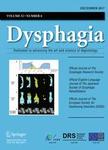版权所有:内蒙古大学图书馆 技术提供:维普资讯• 智图
内蒙古自治区呼和浩特市赛罕区大学西街235号 邮编: 010021

作者机构:Univ Washington Dept Rehabil Med Seattle WA 98195 USA Univ Washington Dept Elect Engn Seattle WA 98195 USA
出 版 物:《DYSPHAGIA》 (Dysphagia)
年 卷 期:1999年第14卷第4期
页 面:219-227页
核心收录:
学科分类:1002[医学-临床医学] 100201[医学-内科学(含:心血管病、血液病、呼吸系病、消化系病、内分泌与代谢病、肾病、风湿病、传染病)] 10[医学]
主 题:pharyngeal bolus transport contour tracking snake algorithm deglutition deglutition disorders
摘 要:Videofluorography (VFG) using a barium-mixed bolus is in wide clinical use for assessing patients with swallowing disorders. VFG is usually done with both lateral (LA) and anterior-posterior (AP) views, most commonly in two separate sittings. A real-time, three-dimensional (3-D) representation of the evolution of a pharyngeal bolus and its volumetric information can potentially help clinicians analyze and visualize the kinematics of swallowing, dysphagia, and compensatory therapeutic strategies. Active contour models, also known as Snakes, have been used to solve various image analysis and computer vision problems. We applied a Snake algorithm to automate in part the contour tracking and reconstruction of VFG images to visualize and quantitatively analyze the 3-D evolution of a pharyngeal bolus. To improve the accuracy of the Snake search, we provided the additional knowledge of the pharyngeal image itself, which served as an extra constraint to push the Snake curve toward the desired contour. VFG of pharyngeal bolus transport in a normal subject was recorded by using barium-mixed boluses (viscosity: 185 centipoise, density: 2.84 g/cc) with volumes of 5, 10, and 20 ml, The resulting LA and AP video images were digitally captured and matched frame by frame. The knowledge-based Snake search algorithm was used to generate Snake points to satisfy both internal (i.e., smoothness) and external (i.e., boundary fitting) constraints. Using these Snake points, we traced the 3-D bolus movement at each time instant, assuming elliptic geometry in the cross-section of the pharyngeal bolus. By concatenating the 3-D images for each time instant, we developed a 3-D movie representing pharyngeal bolus movement. The efficiency, reproducibility, and accuracy of this algorithm in tracing pharyngeal bolus boundaries and estimating front/tail velocities were assessed and found satisfactory. We conclude that 3-D pharyngeal bolus movement can be traced both accurately and efficiently by